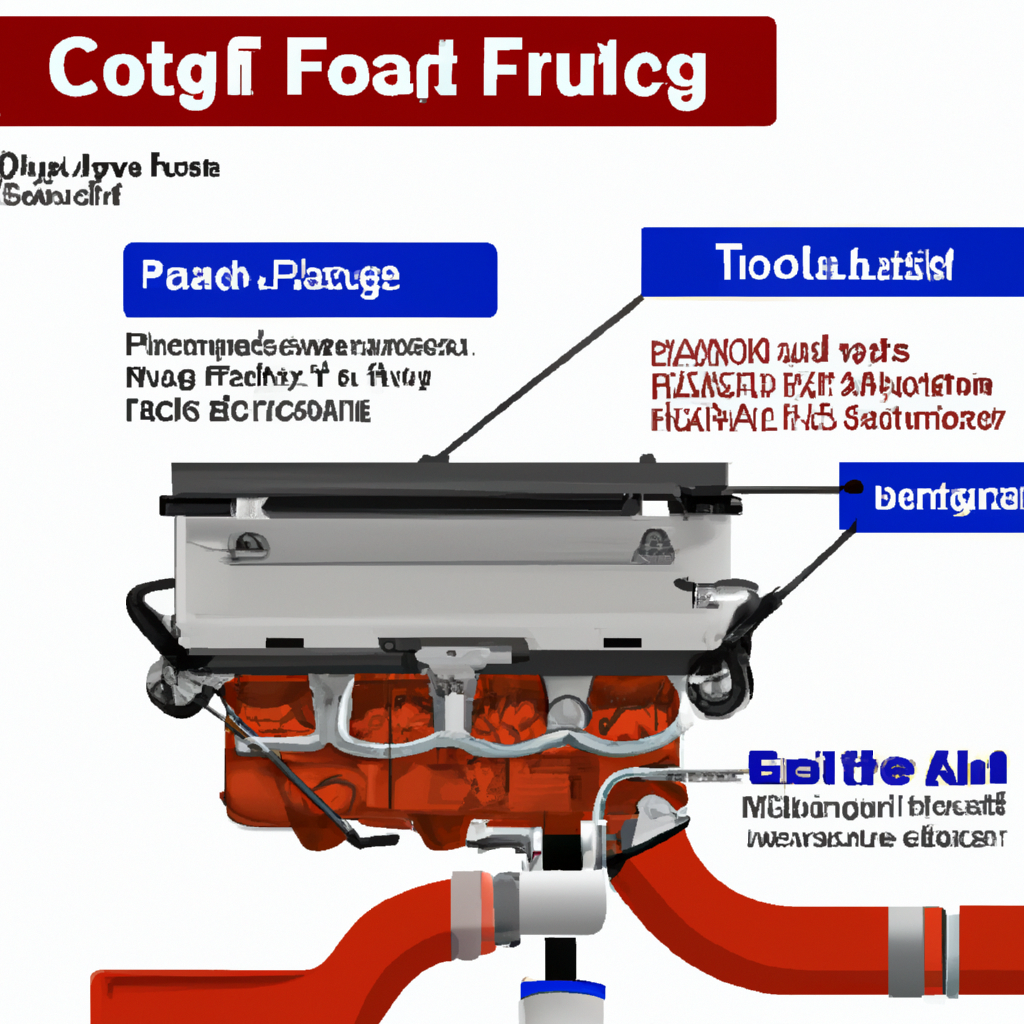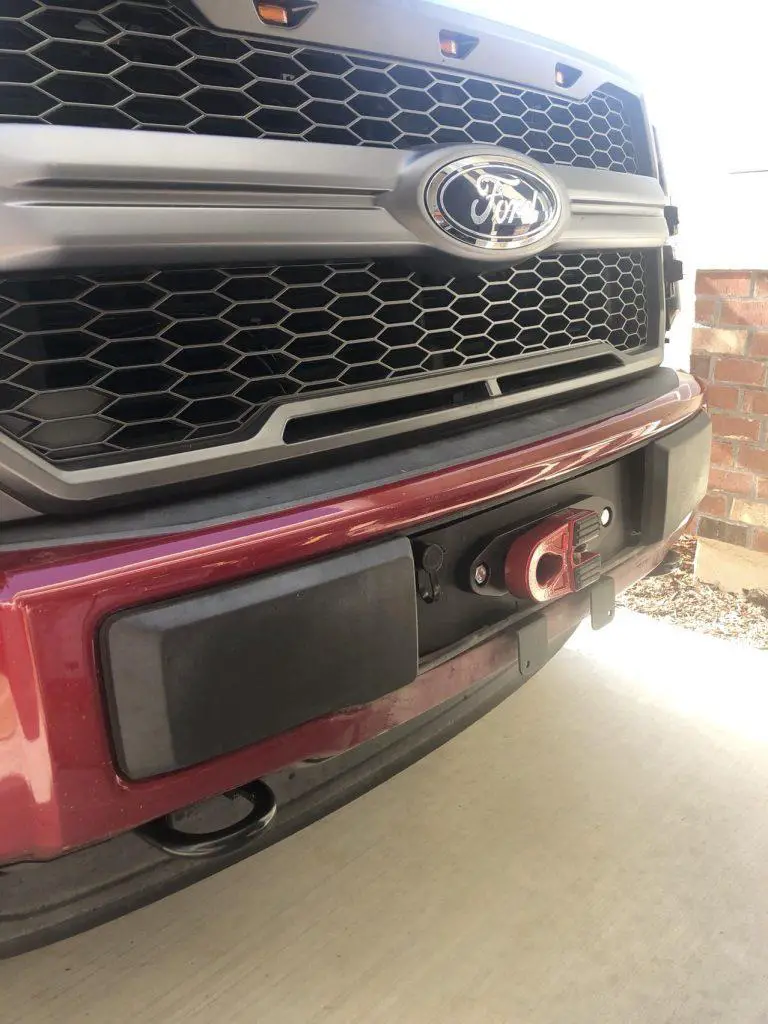F150 Ecoboost Oil Filter Location
Last Updated on by David Jon
In this comprehensive guide, you’ll find invaluable insight concerning the location of the oil filter in the F150 Ecoboost, a feature of keen interest to Ford owners, do-it-yourself enthusiasts, professional mechanics, and those invested in Ford vehicle maintenance. Seamlessly blending essential technical details with user-friendly explanations, this piece ensures a clear understanding of the F150 Ecoboost oil filter location to assist in smooth repair operations.

Understanding the Importance of Oil Filters
With our mutual passion for driving and maintaining our vehicles in prime condition, we recognize the significant role oil filters play. Oil filters might be small components of our vehicle, but they carry a monumental responsibility. They cleanse the oil that lubricates our engine, removing impurities such as dirt, metal particles, and rust. Without the filter, these contaminants would wear down the engine parts over time.
Basic Functions of Oil Filters
At its most basic level, an oil filter functions by trapping and retaining all these impurities preventing them from circulating within our vehicle’s system. Without this critical component, the contaminants in the engine oil would cause increased wear and tear of the engine components, leading to premature engine failure.
How Oil Filters Impact Vehicle Performance
A clean oil filter contributes significantly to our vehicle’s overall performance. By keeping the engine oil clean and free from harmful particles, the condition of our vehicle’s engine is maintained, its lifespan is extended and it operates more efficiently. Ultimately, investing in a quality oil filter saves us from expensive damages and enhances our driving experience.
Lifespan of Oil Filters
The lifespan of oil filters varied depending upon the usage and the vehicle’s maintenance. However, we generally advise changing the filter during every oil change, typically every 3,000 to 5,000 miles. Doing so ensures that the engine continues to function smoothly without any damage from contaminants.
Identifying your F150 Ecoboost Model
Understanding the specifics of our F150 Ecoboost model aids us in carrying out maintenance tasks effectively. Identifying your model by year and specifications related to oil filters can lead to efficient self-service and avoidance of common mishaps.
Different Models of F150 Ecoboost
Over the years, Ford has released various F150 Ecoboost models, each carrying a unique set of features. Each model has an oil filter design compatible with its engine design and performance capacity.
Year-to-Year Variations
Year-to-year variations in F150 Ecoboost models might present slight variations in the oil filter’s size, make, shape, and location. By recognizing these variations, we can be sure to purchase and install the correct oil filter for our specific truck model.
Specifications Related to Oil Filters in Different Models
Specifications of oil filters in different F150 Ecoboost models primarily involve dimensions and filter media. It’s imperative to refer to the manufacturer’s guide, certifying that we’re procuring the right filter for our vehicle.
Locating the Oil Filter in F150 Ecoboost
Part of being proficient in maintaining our vehicles involves knowing the locations of key components, including the oil filter. It’s generally at the bottom of the engine for F150 Ecoboost models.
Step-by-Step Guide to Locate the Oil Filter
Finding the oil filter involves raising the vehicle using a jack and locating the oil pan underneath the engine. The filter is usually on the side or towards the rear of the oil pan.
Visual Aids for Oil Filter Location
Referring to the manufacturer’s manual, or vehicle guide can offer valuable visual aids in locating the oil filter. These guides usually include diagrams that detail the component’s location.
Precactions while Accessing the Oil Filter
Always ensure the vehicle is secured on a stable surface with the parking brake engaged before beginning. Using jack stands will provide an extra layer of safety while working underneath the vehicle.

Removing the Old Oil Filter
With the correct tools and a well-mapped approach, removing the old oil filter can be a simple process.
Necessary Tools for Oil Filter Removal
A quality oil filter wrench, rags or absorbent pads, an oil catch pan, and a socket set are some of the essential tools we need for oil filter removal.
Steps for Safe Removal of Old Oil Filter
Position the oil catch pan beneath the filter, use the oil filter wrench to unscrew the old filter. Be careful, as it will still contain some oil. Once done, we carefully lift it away and clean the mounting surface on the engine with a clean rag.
Important Precautions
When removing the old oil filter, be cautious of hot parts if the engine was recently running. Always wear protective gloves to safeguard ourselves from potential burns and keep our skin away from used motor oil.
Comparing Different Brands of Oil Filters
Researching and comparing different brands of oil filters aids us in finding the one that suits our needs best.
Top Brands for F150 Ecoboost Oil Filters
Top brands for F150 Ecoboost oil filters include Motorcraft, Fram, and K&N. Each offers its unique qualities in terms of filter media, lifespan, and performance.
Comparing Performance and Durability
When comparing brands, we should look out for the oil filter’s overall performance, durability, efficiency of filtration media, and even customer reviews.
Price and Value for Money of Various Brands
While cheaper options may seem attractive, it’s vital to ensure quality isn’t compromised. When considering price, we also need to factor in the value for money and the oil filter’s effect on our engine’s long-term health.
Installing a New Oil Filter in F150 Ecoboost
Replacing the old filter with a new one is an integral part of the process. Doing it correctly ensures our vehicle’s optimal performance.
Choosing the Right Oil Filter
Before deciding on the right oil filter, basic research on our vehicle’s specific needs can aid in making an informed choice. The right oil filter would depend on our vehicle model, the type of oil we are using, and the driving conditions our vehicle is regularly exposed to.
Step-by-Step Installation Guide
Installation of a new oil filter involves applying new oil to the gasket of the new filter, and then screwing the new filter into place by hand. We then tighten it with an oil filter wrench.
Post-Installation Checks and Balances
After installation, it’s recommended to start your vehicle and let it run for a few minutes. This step helps to fill the new oil filter with oil. Check for leaks around the oil filter and the oil pan plug.
Common Issues with F150 Ecoboost Oil Filters
Being aware of the common issues associated with oil filters will help us anticipate potential problems and act accordingly.
Typical Problems Encountered
Some of the problems we might encounter include oil leaks, clogged filters, or improperly installed filters.
Signs of a Faulty Oil Filter
Warning signs of a faulty oil filter to look out for include lack of engine power, reduced fuel efficiency, dirty exhaust, and irregular metallic sounds.
Impact of Ignoring Oil Filter Issues
If we ignore these signals, particles may circulate with the oil and cause friction between the engine components, leading to premature wear and tear, or even engine failure.
Preventive Maintenance for F150 Ecoboost Oil Filters
All vehicles require preventative maintenance, and this includes regular oil and oil filter changes.
Recommended Maintenance Frequency
Generally, we advise replacing the oil filter at each oil change, which is typically every 3,000-5,000 miles. Some vehicles may go up to 7,500 or even 10,000 miles between oil changes, but under harsh driving conditions, we may need to change our oil sooner.
Best Practices for Oil Filter Maintenance
Maintaining a schedule for oil filter replacement is one of the best practices. Regular inspection for oil leaks and pressure loss can help detect any issues early on, and keeping a record of all maintenance work done enhances the resale value of our vehicle.
Impact of Regular Maintenance on Vehicle Performance
Regular maintenance helps achieve optimal vehicle performance, prolong engine life, and prevent costly repairs by identifying potential problems early on.
DIY vs Professional Servicing
While we encourage self-service, certain situations may require professional inspection and servicing.
Understanding When DIY is Appropriate
DIY may be well suited for routine jobs such as oil and oil filter changes with the right set of tools and enough experience. However, for more complex diagnostics and repairs, professional expertise could be necessary.
Benefits of Professional Servicing
Professional service offers the advantage of experienced and trained mechanics who can perform a host of operations efficiently and accurately. They also have access to specialized equipment, which may not be available otherwise.
Cost Comparison
While DIY can save up-front labor costs, it’s essential to consider the investment in tools and the value of time spent. Considering the possibility of error leading to potential damage, professional services might offer more cost-effective long-term benefits.
Summary and Next Steps
Preserving the longevity of our F150 Ecoboost vehicle is greatly dependent on our understanding and commitment to regular maintenance tasks such as oil filter changes.
Ensuring the Longevity of your F150 Ecoboost
Regular servicing and performing timely corrective actions are critical to ensure the longevity of our F150 Ecoboost. Selecting the right oil filter for our specific model, settling on a maintenance schedule, and understanding when professional service is essential are aspects that can help the condition of our vehicle.
Continuous Learning about Vehicle Maintenance
As we continue our exploration and learning about vehicle maintenance, we become more adept at identifying and resolving issues independently. This knowledge not only gives us greater control over the health of our Ford F150 Ecoboost but also deepens our appreciation for the intricacies of vehicle maintenance.
Practical Tips for Maintaining your F150 Ecoboost
Finally, maintaining our F150 Ecoboost in top-notch condition demands an understanding of its specific components and requirements, regularly scheduled checks, identifying the signs of potential issues, and keeping an eye for new developments and advancements in vehicle servicing.
By adopting these practices, we ensure an enjoyable driving experience and extend the life of our beloved vehicle. We are, after all, not just owners of our F150 Ecoboost, but also its caretakers.



